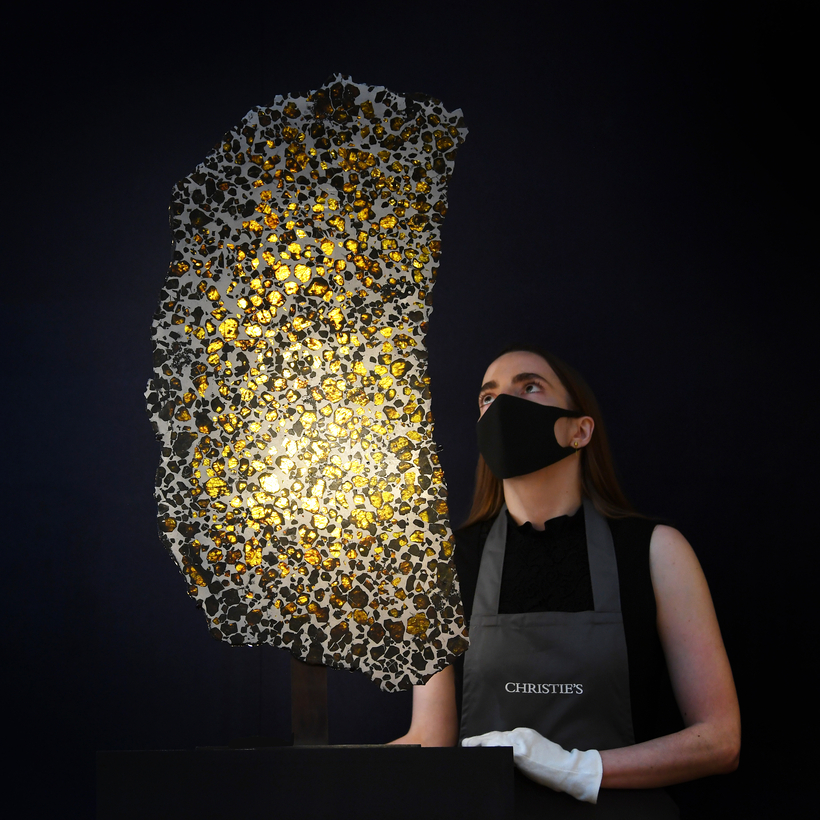At this year’s Frieze Masters fair, in London’s Regent’s Park, amid booths filled with work by Brueghel, Miró, and Rauschenberg, there was also a collection of some of the oldest and most eye-catching creations in the universe: meteorites.
Studded with gem-like glass or lined with striations of crystallized metal formed as they blazed through the sky, these meteorites had been sliced open to reveal their interiors, or polished into gleaming orbs, or left in a raw sculptural state complete with a burnished fusion crust. The result was objects of astonishing beauty and sky-high price tags.
Meteorites are rare. There are fewer than 70,000 on Earth. If you weighed all the meteorite fragments ever found, it would be less than the amount of gold mined in a single year. There are more signed Picassos—originals and prints—than there are meteorites.
However, like the Picassos, each meteorite has its own unique chemical signature that provides it with an unmistakable provenance. In return for a new meteorite specimen being donated to a major collection for study, the Meteoritical Society will authenticate and name it, a process that significantly raises its value.

“Prices definitely have increased in the past few years,” says Costas Paraskevaides, director of ArtAncient, whose stall it was at Frieze Masters. Among the most sought-after examples, he says, are smooth, rippled chunks of solid iron from the Gibeon meteorite, which broke up in Earth’s atmosphere above Namibia thousands of years ago, and pieces of which were long used by indigenous people as blades and spear tips. Other popular examples include fragments of the iron-rich Sikhote-Alin meteorite, which fell on Siberia in February 1947.
Auction houses now hold regular sales of meteorites, and a sale at Sotheby’s in July saw a 13-pound lunar meteorite—the second-largest piece of the moon to be found on the Earth—sell for $478,800. Both Steven Spielberg and Elon Musk have been meteorite buyers.
“We’ve seen tremendous interest in them from collectors across the spectrum,” says Cassandra Hatton, Sotheby’s global head of Science & Popular Culture. “Not only from tried-and-true collectors of natural history and space enthusiasts, but also from collectors who appreciate meteorites as objects of beauty that can be enjoyed as cosmic jewels or sculptural works of art.”

At Frieze Masters, these chunks of space debris could easily be mistaken for maquettes by Henry Moore or Alberto Giacometti. But why, at the center of the exhibition, was there a rusty, corrugated-iron doghouse? It must have been a Tracey Emin, surely? No. This was just a doghouse, but one that happened to have been hit by a meteorite in Costa Rica in 2019.
Such objects have become collectors’ items themselves. An old Chevy Malibu, which had been bought for $300, sold for $25,000 after being hit by a meteorite in Peekskill, New York. A simple metal mailbox struck by a meteorite in Claxton, Georgia, sold for nearly $83,000. Putting many of the surrounding meteorites and artworks to shame, the doghouse on show at Frieze Masters was now being offered for an undisclosed six-figure sum.
Carl Wilkinson is a London-based journalist and author

